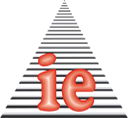CONTENTS
|
Product
Personalization and Customization: Proposing a System
Architecture that Integrates Self-Transactional Materials with
RFID and IoT Shared Database Elena PUICA 5 This research paper presents a novel system architecture that integrates Self-Transactional materials with Radio Frequency Identification (RFID), Internet of Things (IoT), and a Shared Database to enable efficient product personalization and customization in supply chain management (SCM). By utilizing RFID tags to carry unique customer preferences or design specifications and leveraging IoT technologies for data communication and control, this proposed architecture aims to streamline the manufacturing processes and enhance customer satisfaction. The shared database serves as a central repository for storing customer-specific information and facilitates seamless coordination across the supply chain. Through the integration of these technologies, this system architecture demonstrates potential for reducing lead times, supporting flexible manufacturing processes, and achieving accurate and timely customization of products. Keywords: Product personalization, Self-transactional materials, IoT Shared database, Automotive industry system architecture, Production optimization The Need of Advanced Driver-Assistance System’s Development based on an Analysis of Road Accidents Diana GHEORGHE 17 Taking a look at the numbers of road accidents using Machine Learning techniques and configuring predictions based on historic data, the paper aims to emphasize the need of a method to decrease numbers of accidents. Machine learning techniques have shown great potential in analyzing large-scale datasets related to road accidents. By leveraging these techniques, researchers have been able to identify key contributing factors, such as driver behavior, road conditions, and vehicle characteristics, which play a crucial role in accident occurrence. Through the analysis of historical accident data, machine learning models can effectively predict the likelihood of future accidents and identify high-risk areas, enabling proactive measures to be implemented. ADAS systems provide real-time information and assist drivers in making informed decisions while driving, thereby mitigating potential risks. A particular interest of this Article is underlining the importance of ADAS in the automotive field and how it can benefit the drivers. Keywords: Machine Learning, ADAS, Road accidents, Automotive Industry Analysis of Electronic Business of European Union and Serbia Companies Based on the LMAW-DNMA Method Radojko LUKIC 29 Modern companies perform their business activities in the classic way and electronically. Recently, there is an increasingly pronounced trend for companies from all countries of the world, which means both the European Union and Serbia, to conduct business activities electronically. Electronic business enables the performance of business activities in real time, without geographical and time barriers. The effects of electronic business are, among other things, an increase in sales, a reduction in costs and thus an increase in profits. In this paper, the trend and rankings of the electronic business of companies in the European Union and Serbia are comparatively analyzed. The general conclusion is that the participation of electronic business in the overall business of companies in the European Union and Serbia is increasing. This is almost the case with companies all over the world. The electronic business of Serbian companies is at a lower level compared to companies in the European Union. It is also at a lower level compared to companies in Croatia and Slovenia. Considering the positive effects of electronic business, it is necessary for Serbian companies to invest as much as possible in information and communication technology. Keywords: Website, Use of Enterprise Resource Planning (ERP), Use of Customer Relationship Management (CRM), enterprise, European Union, Serbia, LMAW-DNMA method Trends in and Contributions to Tallinn Manual Research: An Assessment of the Literature from 1998 to November 2022 Tainyi LUOR, Jen Fu WANG, Hsi-Peng LU 45 Initially aimed at identifying trends and contributions in the extensive field of "Tallinn Manual," this article examines 26 academic publications related to Tallinn Manual, which were featured in journals indexed in the WoS (Web of Science) from 1998 to November 2022. In this survey, we have conducted a thorough analysis of relevant keywords and reviewed numerous articles to determine their connection with the subject matter. Our study encompasses various parameters, such as the amount of publications per year, classification of article types, primary authors, academic journals, and the highest frequently cited articles. Moreover, we have examined citation counts for journals, authors, and articles. The outcomes of our study suggest a noticeable growth in the number of articles related to the Tallinn Manual between 1998 and November 2022, indicating an increasing trend in the influence of Tallinn Manuals before 2020. The research on Tallinn Manual has captivated the attention of several scholars during the study period. Notably, scholars from the United States, Australia, England, the Netherlands, and South Korea have made substantial contributions to this subject. Our study stresses the fact that the notion of Tallinn Manual has piqued the interest of academic researchers, leading to noteworthy advancements in Tallinn Manual research. Keywords: Tallinn Manual, Citation analysis, Contribution, Trend, Literature review Exploring the Effectiveness of ARIMA and GARCH Models in Stock Price Forecasting: An Application in the IT Industry Lavinia Roxana TOMA 61 This study aims to develop a predictive model for stock prices using time-series analysis. The primary objective is to identify volatility patterns through the implementation of the GARCH model and forecast future stock prices for Microsoft company utilizing the ARIMA model based on historical data. The findings of this study contribute to the literature on stock price forecasting and provide insights for investors in making informed investment decisions. Moreover, the effectiveness of the proposed methodology is assessed through a comprehensive set of tests, indicating highly positive results when compared to other similar approaches. Keywords: Machine learning, Autoregressive Integrated Moving Average, Generalized Autoregressive Conditional Heteroskedasticity, ARIMA, GARCH Publishing Guide for Authors 73 INFOREC Association 75 |
